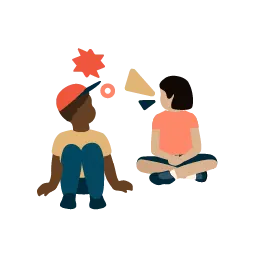The difference between written expression disorder and expressive language disorder
Written expression disorder and expressive language disorder both make it hard for kids to share their thoughts and ideas. Explore the differences between them. Learn ways to help at school and at home.

Written expression disorder and expressive language disorder are two conditions that make it hard for kids to express themselves. One impacts writing, and the other impacts speaking.
But while these conditions sometimes co-occur, they’re very different. Learn more.
What they are
Written expression disorder refers to a learning disability in writing. Kids may be able to express their thoughts when speaking, but they struggle to do it when writing.
Expressive language disorder is a type of language disorder that impacts learning. Kids generally understand what’s being said. But they struggle to form and produce a spoken response.
Signs you may see
Common signs of written expression disorder include:
Using simpler sentences when writing than when speaking.
Writing sentences that are hard to understand.
Seeming frustrated by the act of writing.
Writing drafts without any planning or revisions.
Using the same words over and over.
Common signs of expressive language disorder include:
Using short phrases or sentences.
Having a limited vocabulary compared to kids the same age.
Using unspecific words like it or that.
Making frequent grammar errors, like using the wrong verb tense or skipping small words like to or of.
Having trouble finding words.
Having trouble telling about experiences in a way that makes sense to others.
Having difficulty describing objects or explaining “how to.”
How schools can help
Written expression disorder: Kids may be able to get accommodations through an or a . One example is extra time for tests that involve writing. Another is letting them respond in ways other than writing. A third is having them talk out stories or ideas and helping them create an outline.
Expressive language disorder: Kids may be able to get classroom accommodations. For example, teachers might use labeled pictures or other visual supports to help kids access vocabulary during certain situations or activities. Schools might also provide speech-language therapy.
Schools might give students outlines or graphic organizers to help them organize spoken or written language. They might also pre-teach vocabulary for new readings or classwork.
How you can help at home
Written expression disorder
Use speech-to-text tools (many are free) that can convert spoken words to text.
Play writing games, like Mad Libs.
Find apps and games that encourage interest in writing.
Give your child the words to self-advocate.
Expressive language disorder
Play guessing games like “I spy” or “20 questions.”
Repeat what your child says to you, modeling the correct sentence structure, grammar, or pronunciation.
Find apps and games that encourage vocabulary building.
Practice sequencing. For instance, you can say, “Can you tell me how we made mac and cheese for dinner? What did we do first, second, third?” (Also, model this for your child. Talk about how you did things in a sequential way as you teach your child new skills.)
Give your child the words to self-advocate.
Read together and talk about characters or events. Ask questions. Have your child predict what’s next.
Do the same with movies or TV shows that your child chooses.
Give your child extra time to speak without interrupting them.
Pay more attention to the message than to how your child is saying it. This will keep the lines of communication open.
Talk to your child and around your child. Make comments, ask questions, label objects, or talk about new words.

